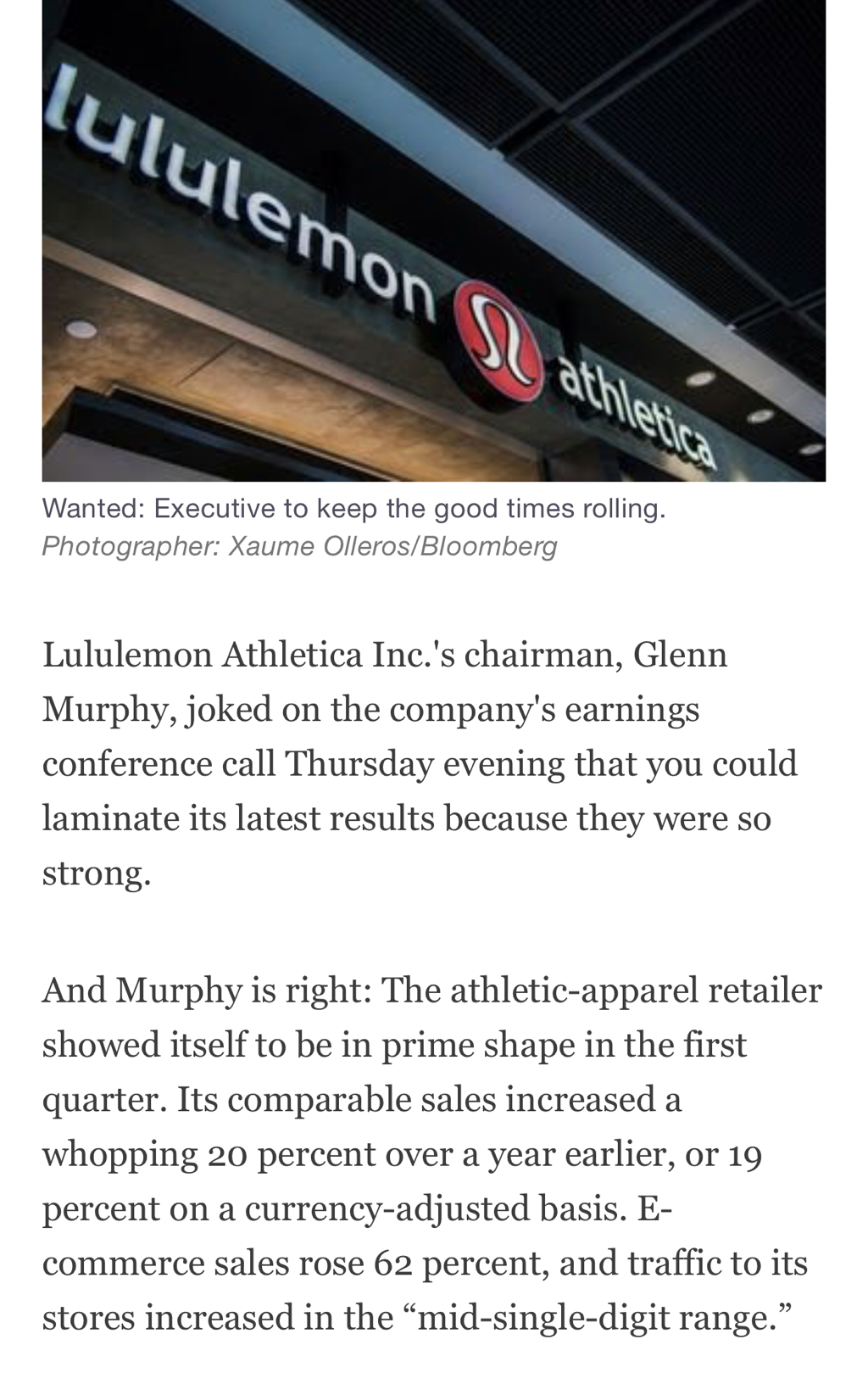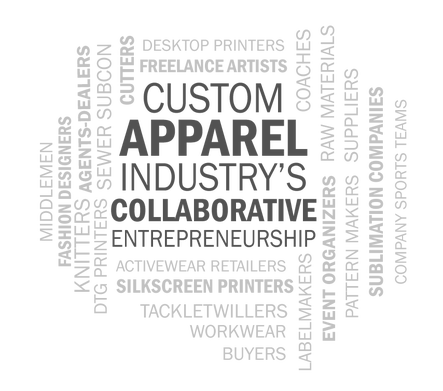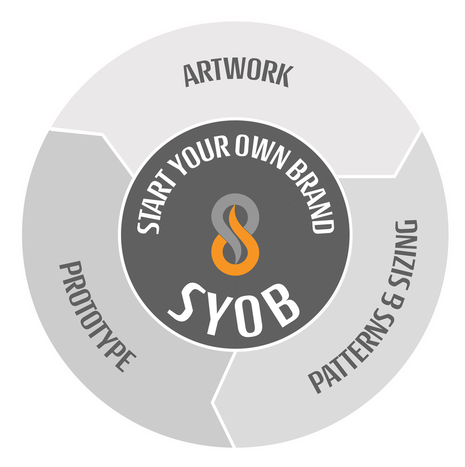|
A case can be made that the “about” section on your website is the single most important page on the entire site. It’s where strangers can get comfortably acquainted with your brand, and where they can learn to not only like your company, but trust your company. And that’s crucial to your business success. We humans aren’t always a very trusting species to begin with. We don’t trust politicians, doctors, in-laws, and least of all, companies. So how exactly do you achieve trust for your business online? Here are a few must-haves to include on your “about” page to begin building that relationship. Real imagery or video Speaking about trust, your potential customers trust real people. So show real people. Consider using imagery of actual customers enjoying your product or service, and maybe even include pictures of your team, either individually or as a group. And if you have the ability to create an “about” video, that's even better. Simple language You could probably write a book about your company and all the complexities of your product offerings -- which is great! Let’s not make people read it though. Your potential customers need easy-to-understand, digestible information. This doesn’t mean you need to make it short, just make sure you only include information that someone would be interested in knowing and capable of understanding. Also, don’t be afraid to use bullet points. Everyone loves a list. A brand story In plain, concise language, answer all the pertinent questions about your brand: “What do you do?”; “How do you do what you do?”; “Where do you do what you do?”; and most importantly, “Why do you do what you do?” Tell your brand’s story as a narrative. Explain what inspired you to create your company, what drives you to keep going, and what you’re offering to the potential customers who give you a chance. Make it easy to contact your company Many visitors will visit an “about” page thinking it’s a way to contact the company directly, so don’t leave them out in the cold. They might even just need to know that they can contact you without needing to at the time. If you have a main phone number for customers to call, this is a great place to include it. Otherwise, consider using a clean, simple contact form to field inquiries. This doubles as a great way for you to learn about what your visitors are looking for and provides you with a way to track customer interactions. Links to your social media While this seems obvious enough, it’s super important and you would be surprised at the number of companies that don’t include social media links. Your social media, in many ways, is an extension of your “about” section. It’s where people can get information about your brand, engage with you, and learn about your company culture. Plus, including links to your social pages from your “about” section is a great way to increase your following. Mastering the perfect “about” page isn’t rocket science. It just takes a little understanding of what your customers are looking for -- whether it’s company details, contact information, or proof that your company is made up of humans and not vicious cyborgs. Courtesy of Weebly Chad Reid • Director of Communications for JotForm, a popular online form building tool for small businesses
1 Comment
If you’ve ever received feedback that you “need to be more strategic,” you know how frustrating it can feel. To add insult to injury, the feedback rarely comes with any concrete guidance on what to do about it. One of my coaching clients, Lisa, a vice president of HR, was in this situation and explains, “I was just told to think bigger picture and to be more strategic. It felt like I had been given the definition of a word by using the same word. It just wasn’t helpful.”
So what specific steps can you take to be more strategic in your current role?' Start by changing your mindset. If you believe that strategic thinking is only for senior executives, think again. It can, and must, happen at every level of the organization; it’s one of those unwritten parts of all job descriptions. Ignore this fact and you risk getting passed over for a promotion, or having your budget cut because your department’s strategic contribution is unclear. Once you’ve accepted that it’s part of your job, focus on developing four key abilities that demonstrate your strategic prowess. Know: Observe and Seek Trends Lisa wasn’t seeing the big picture. Because of the amount of work she had and the pace at which she needed to get it done, she often took a “heads down” approach to her job and failed to “lift up” and observe both internal and external trends. She was missing key information that could help her focus, prioritize, and be proactive in addressing talent issues for her fast-growing company. Because Lisa approached her job in a transactional manner, simply getting the next hire, she didn’t recognize that she needed a completely new approach to recruitment and retention. In order to be strategic, you need a solid understanding of the industry context, trends, and business drivers. An intellectual appreciation of the importance of bringing in current data and seeking trends isn’t enough. You also have to:
Think: Ask the Tough Questions With a fresh understanding of trends and issues, you can practice using strategic thinking by asking yourself, “How do I broaden what I consider?” Questions are the language of strategy. Lisa came to appreciate that her life and prior experience gave her a unique, yet myopic, strategic lens. So she pushed herself to ramp up her perspective-taking and inquiry skills. By becoming more curious, and looking at information from different points of view, she was able to reduce her myopia and see different possibilities, different approaches, and different potential outcomes. Thinking Strategically For example, when working on an employee retention project she asked herself, “What does success look like in Year 1?” “What does it look like in Year 3?” “What could impact the outcome in a negative way?” “What are the early signs of success/failure?” “What do business partners need to understand to ensure its success?” and “Do the outcomes support the broader goals of the organization?” By asking these tough questions first, she recognized that she could better engage with colleagues and senior executives early on in ways that would benefit the project — and would help shape the perception that she was thoughtful and strategic. Speak: Sound Strategic Strategic thinkers also know how to speak the language. They prioritize and sequence their thoughts. They structure their verbal and written communication in a way that helps their audience focus on their core message. They challenge the status quo and get people talking about underlying assumptions. Those that are really skilled walk people through the process of identifying issues, shaping common understanding, and framing strategic choices. If this sounds complex, that’s because it is. But there are ways you can start honing these skills:
Lisa didn’t realize that the way she spoke created the perception that she was not strategic. She set about changing that. First by focusing her one-on-ones with her CHRO on higher level discussions and leaving tactical issues to email. She chose one or two strategic areas to focus on. and made sure to frame issues in the context of the CHRO’s and the CEO’s top priorities. Act: Make Time for Thinking and Embrace Conflict In the early phase of our work together, Lisa kept a jam-packed schedule, running from meeting to meeting. She found it difficult to contribute strategically without the time to reflect on the issues and to ponder options. Recognizing that she was not bringing her full value to the table, she started to evaluate her tasks based on urgency and importance as outlined in Stephen Covey’s 2 x 2 matrix. She stopped going to meetings she didn’t need to be at. She blocked out thinking time on her calendar and honored it, just as she would for other meetings. And she fought back the initial guilt of “Am I doing real work when I’m just sitting at my desk thinking?” Lisa also practiced other key skills. She learned to embrace debate and to invite challenge, without letting it get personal so that she could ask tough questions. To do this, she focused on issues, not people, and used neutral peers to challenge her thinking. To manage the inevitable ambiguity that arises when you ask more questions, Lisa also learned to clarify her decision-making criteria, allowing her to better act in the face of imperfect information. The quest to build your strategic skills can be uncomfortable. At first, you might feel like you’re kicking up sand in the ocean. Your vision will be blurred as you manage through the unsettling feelings that come with challenging your own assumptions and gaining comfort with conflict and curiosity. Once the dust settles, however, and you’re able to contribute at a higher level, you’ll be glad you took the risk. Nina A. Bowman is a managing Partner at Paravis Partners, an executive coaching and leadership development firm. She is a contributing author to the HBR Guide to Coaching Employees. By Jon Keehn
Equity Analyst Walk down almost any street and you’re bound to see people who look like they’re headed to a yoga studio, spin class or specialty gym — whether they are or not. This is part of a trend in which athletic wear is becoming a fixture in mainstream fashion and apparel. From running gear and workout clothes to yoga pants and leggings, sportswear is growing ever more popular in the U.S. and increasingly taking hold in the developing world. This is creating opportunities for athletic apparel and footwear companies, especially those capable of pairing sought-after designs and innovation with the marketing and distribution muscle needed to stand out in a crowded field. The rising popularity of athletic wear is being driven by a variety of social and demographic factors, starting with greater health consciousness. More people in the U.S. and Europe are attuned to their physical well-being, while an expanding middle class in the developing world is signing up for gym memberships and boosting its sports participation. That’s contributing to so-called athleisure, in which sports-influenced attire is increasingly versatile and worn in everyday settings. As with so much of fashion, this dynamic is driven partly by cachet. Just as personal trainers and designer barre classes have become status symbols, so have sports-inspired garments. Growth is also being spurred by product innovations, such as advanced materials that make sports shoes lighter and more form-fitting, and ongoing specialization in which consumers buy activity-specific shoes for running, tennis, hiking and so on. Looking ahead, the emergence of wearable technology — in which digital devices such as fitness trackers are woven into pants, shorts and sneakers — is likely to spark consumer interest in coming years. Athletic wear is a bright spot in the otherwise troubled apparel sector. The encouraging outlook for sports-related clothing stands in contrast to the dimmer prospects for the general apparel business, which is confronting numerous headwinds. Given the relative ease in designing and manufacturing basic apparel, there are low barriers to entry. The result is a highly fragmented industry in which even leading brands garner only low-single-digit market share. Most apparel makers have little pricing power and have had to grapple with deflationary pressures for the past decade. That could worsen in coming years as profit margins are squeezed by rising labor costs in Asia, where most global manufacturing takes place. Apparel manufacturers also face the perennial challenge of fickle consumer tastes. Countless brands have skyrocketed as consumers grew infatuated with their designs, only to suffer later when the market became oversaturated and shoppers moved on to the next big thing. Even some well-respected brands have fared poorly as capricious fashion trends went against them. Companies that miss a trend are saddled with excess inventory, which can mean profit-draining sales promotions and long-term damage to brand reputation. Meanwhile, apparel retailers — those with storefronts in shopping centers and strip malls — are facing their own existential threat in the form of e-commerce. Similar to trends in electronics, media and office products, consumers are increasingly buying apparel online. The result has been steadily declining mall traffic and ongoing margin compression. It’s likely that only the strongest brands will be able to adapt to the evolving e-commerce world. Achieving scale is a key advantage in the sportswear business. Athletic apparel, by contrast, has far higher barriers to entry, giving prominent brands an edge over lower-quality competitors. Sportswear and shoes typically are high-performance products requiring extensive research and development, which makes it difficult for knockoffs to gain traction. Footwear manufacturing, in particular, is a highly technical and labor-intensive process; there are only about 30 large footwear producers worldwide. That’s an advantage for established brands, whose extensive volume helps to secure limited production capacity. In the same vein, leading companies typically have sizable marketing and advertising budgets, which are critical in building brand awareness and loyalty. Athletic-clothing companies earmark an average of three times as much for marketing as their general apparel peers. This need to spend heavily on league sponsorships and athlete endorsements makes it hard for newer companies to establish crucial brand recognition. Athletic brands are also far better positioned than traditional apparel retailers to sell directly to consumers over the Internet or through their own stores, where profit margins are much higher. Add up the collective advantages of sportswear makers, and they tend to have greater pricing power, faster growth and better returns on capital than the rest of the apparel industry. The opportunities are brightest in underpenetrated emerging markets, where there is a high correlation between economic growth and consumer spending on apparel. Although there are cultural and social differences among individual countries, there is significant room for growth overall. Well-known brands are extremely popular overseas, where sportswear makes up a smaller portion of total apparel sales than in the developed world. Over the long term, athletic wear is likely to play an increasing role in consumer wardrobes. Among other social and demographic trends, the millennial generation has shown a clear preference for casual attire that could propel sportswear in coming years. While established brands have key advantages, up-and-coming companies with clear visions and disruptive concepts can also be promising opportunities. Given the challenges facing the apparel industry, it’s essential to be selective when picking investments. That provides the best opportunity to identify companies with superior long-term potential. Jon Keene is an equity analyst who covers the U.S. retail industry. He has 15 years of investment experience and has been with Capital Group since 2016. Global Sports Apparel Market is expected to generate revenue of $184.6 billion by 2020, growing at a CAGR of 4.3% during the forecast period, 2015-2020, according to new research published by Allied Market Research. Growing health awareness, increasing disposable income and a surge in female participation in sports are the major factors driving the growth of the sports apparels market.
The global sports apparel market is categorized, based on end users, into apparels for men, women and kids. The men segment dominates the sports apparel market, constituting around 52% of the total market revenue. The women segment is the second biggest contributor, expected to grow at a relatively higher CAGR of 5.7% during the forecast period, on account of the growing interest and participation of women in different sports activities. Based on the mode of sale; retail segment accounted for significant market share in 2014. Some of the prominent companies have focused on opening retail stores in the emerging economies to expand their geographical presence and increase their customer base. The retail segment comprises of supermarkets, brand outlets and discount stores. Online platforms, especially e-commerce sites, have exhibited a robust growth across the globe, owing to the ease of accessibility and availability of a wide range of products at a competitive price. The online mode of sale segment is expected grow at a CAGR of 9.5% during the forecast period. Key Findings of Sports Apparel Market:
To contact the author of this story:
Sarah Halzack at [email protected] Why is collaboration essential to custom apparel entrepreneurs?
It may be true that healthy competition can benefit the consumers and drive the desire to innovate. But in the long run, too much competition can also kill innovation because of the "island-effect" that it can cause. The custom apparel industry in the Philippines is considered fragmented. No single big company controls the entire industry. The downstream companies (raw material and equipment suppliers) are quite few in number but the upstream players (manufacturers, sewers, subcons, marketers, designers, printers, etc.) proliferate and they are now distributed all over the country, from Luzon to Mindanao. The fragmentation results to less bargaining power among the custom apparel players, which can result to more intense competition. The buyers in the custom apparel industry are a mix of big and small ones. On one hand, those who serve the big buyers suffer from more intense competition such that the "island effect" becomes more prevalent among them. On the other hand, the players serving the small buyers face less intense competition. Overall, competition is still intense. If the fragmentation continues, more custom apparel players will perish and new ones will appear, creating a faster cycle of "rise-and-demise". So, how do we reverse this trend and stop this vicious cycle to happen. The only logical thing to do is to encourage the custom apparel players to compete vertically and collaborate horizontally. Yes, you can start your own brand of customized sportswear now. Be one of the those whom we have helped become entrepreneurs over the years. And the best time to start your own brand is NOW!
To be a successful entrepreneur, you need to have a bat. Yes, just like the baseball bat, figuratively, so you can hit the ball flying. BAT stands for
When I say business skills, it means everything that the business school teaches. Although, you may not need a formal business school education, it helps to know the basic teachings in business, which fortunately, can now be learned outside the school. Aside from formal schooling, you can learn from your past business ventures, whether successful or a failure. You can also learn from the internet, from so many published insights and experiences of successful and unsuccesful people. In this internet age, you don't need to experience it yourself to learn from it. Instead, learn from others' experiences. Learning more about the business principle and practices helps you calculate the risks involved and avoid unnecessary failure. More inspiring BAT discussion in the succeeding blogs. When consumers look for answers, discover new things, or make decisions, they're often turning to videos for help. Video content helps guide potential buyers through a long and complex customer journey.
Today’s customer journey is long, complex and involves a lot of consumption of various types of content through digital channels. This makes video the perfect medium for engaging potential customers. Why?
Be a reverse entrepreneur More than 5 years ago, I coined the word Reverse Entrepreneur, which was the title of my website blog. I came to realize that the reason why so many small entrepreneurs failed is because they forgot this principle. Unsuccessful entrepreneur starts from the left. The successful entrepreneur starts from the right, that is why it is called Reverse Entrepreneurship. The proliferation of business seminars focusing on low-capital-and-easy-to-produce products have resulted to so many start-up failures. Examples of these seminars include soap-making, candle-making, screen-printing, flower arrangement, and many others. As you can see, the focus of these business seminars is the low technology requirement as well as the low barrier to entry (meaning, anybody can join the industry without much capital). They are so simple such that the focus of the seminars is to show you that they are so easy and inexpensive to produce. The focus is the left side of the above diagram. What you will not learn is about the right side of the diagram above - the customers, the competition, and the industry you will be competing in. What do customers really need and how do you compete in their minds. Later, you will find out that learning how to produce the product is not the end of it. What makes the venture fail is the need for skills and big capital to spend for packaging, advertising, and distribution. They totally forgot about the growing competition from big and small companies, which sprouted because anything that is easy to produce invites many competitors. The seminar participant, who only have a few hundreds in his pocket is made to believe that if only he can learn to produce the product in small quantity, he will have a business and can be successful. That's not totally true! Been there, done that. The whole point here is that you should be deeply analytical and not believing anything at face value. Start with the customer and the industry analysis. How is reverse entrepreneurship applicable to customized sublimated sportswear First, customization is a highly reverse business operation. Every order starts from the customer. No production can start without a firm customer need. Custom team uniforms are not something that you produce after a one-time market study and customer analysis and interaction, and then sell them. The customization market is a fully reverse operation. Interaction with the same customer continues all throughout the business life. There is no doubt custom team wear business is profitable. If it is really profitable, how come the big brands are not doing it. Actually, they are venturing into customization but they don't seem to be that successful. One possible reason I know is that the big companies are structured differently. They don't own the factories who do their products. and these companies are designed for big lot production (and not small lots needed for customized market). Their marketing outlets are not organized to take customized orders and doing a reverse business operation for every sale is a whole lot of logistical and control nightmare. So, I believe, the customization market will remain a domain of the smaller and more flexible companies who can do guerilla operation. In the customization industry, sublimation technology offers the best alternative because it is much faster and economical to do in small batches. The traditional cut-and-sew team uniforms require longer turn-around. |
CommentsArchives
January 2024
Categories |






 RSS Feed
RSS Feed
